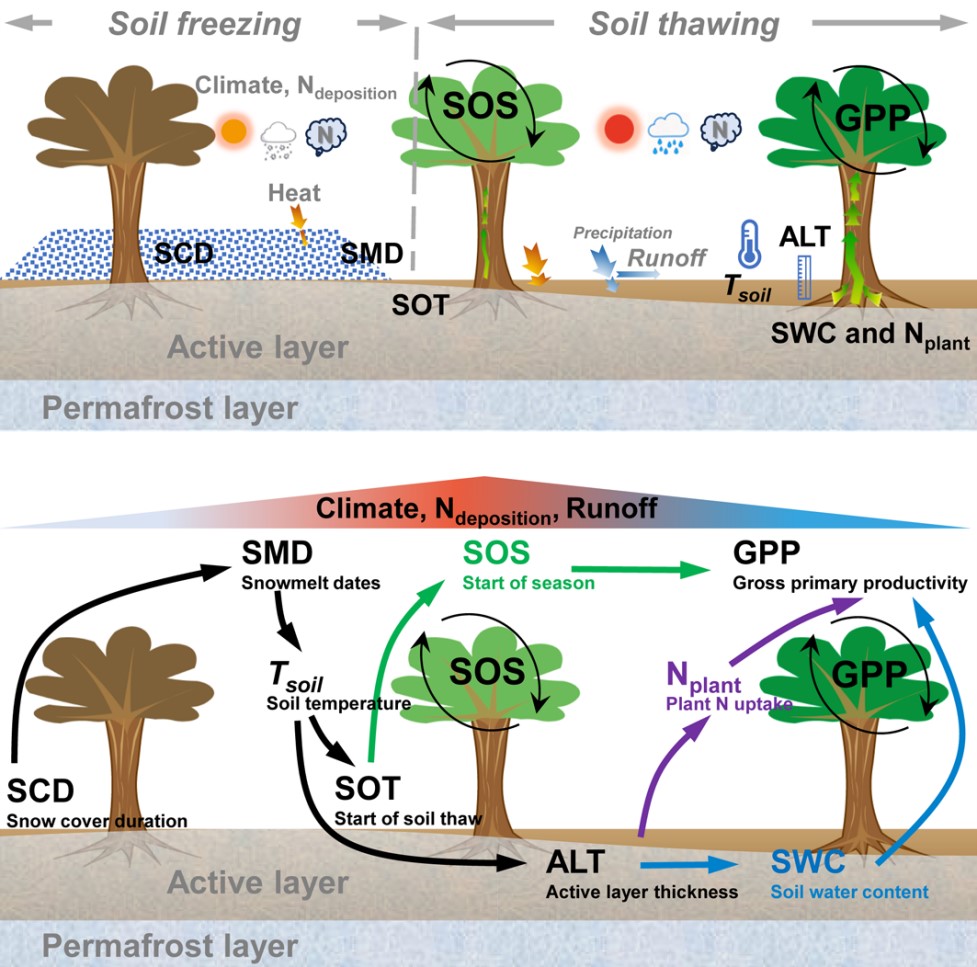2025-05-21 中国科学院(CAS)
 Schematic diagram showing how reduced snow cover accelerates permafrost thaw, altering soil conditions and vegetation growth through thermal, hydrological, and nutrient pathways (Image by CHEN Ning)
Schematic diagram showing how reduced snow cover accelerates permafrost thaw, altering soil conditions and vegetation growth through thermal, hydrological, and nutrient pathways (Image by CHEN Ning)
<関連情報>
- https://english.cas.cn/newsroom/research_news/earth/202505/t20250521_1044200.shtml
- https://www.nature.com/articles/s43247-025-02211-6
温暖化に依存しない積雪期間の短縮は、北部の永久凍土地域の植生緑化を促進する Warming-independent shortened snow cover duration enhances vegetation greening across northern permafrost region
Ning Chen,Xianwei Wang,Fenghui Yuan,Yanyu Song,Li Sun,Yunjiang Zuo,Nannan Wang,Dapao Yu,Li Zhou,Xiaofeng Xu,Changchun Song & Qingwei Wang
Communications Earth & Environment Published:01 April 2025
DOI:https://doi.org/10.1038/s43247-025-02211-6
Abstract
Reduced snow cover is becoming increasingly common in the Arctic-Boreal region under amplified warming, complicating efforts to isolate its specific impacts on plant productivity during the subsequent snow-free seasons. Here, we compiled a multi-source remote sensing dataset to disentangle the effects of warming-independent reduced snow cover across the northern permafrost region over the past 30 years. In years with shortened snow cover duration but normal climate conditions, gross primary productivity increased by a rate of 1.48 g C m-2 for every 10-day shortened snow cover duration and normalized difference vegetation index of 0.0024 in regions with increased soil temperature compared to the long-term mean. This productivity boost was primarily driven by shortened snow cover duration and early snowmelt, which enhanced soil heat uptake, accelerated permafrost thaw, and improved plant water and nutrient availability, thereby advancing spring greening. This study offers valuable insights into Arctic-Boreal climate feedback under a warming climate.



